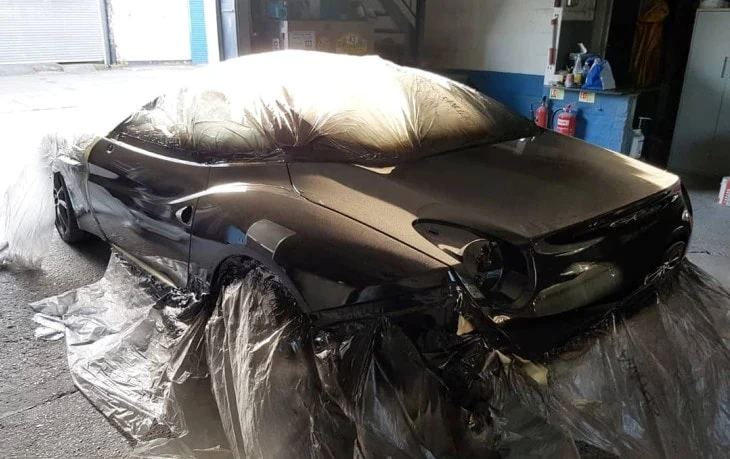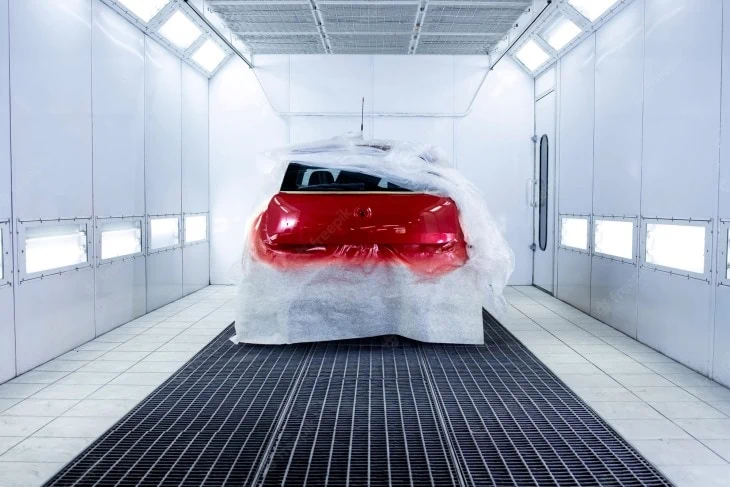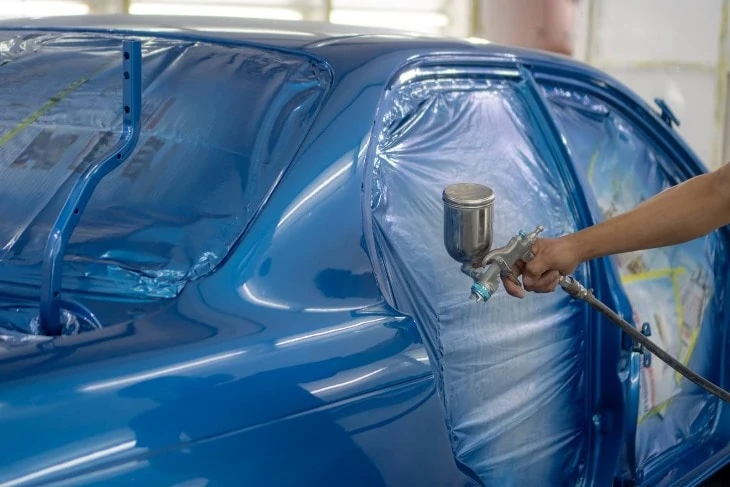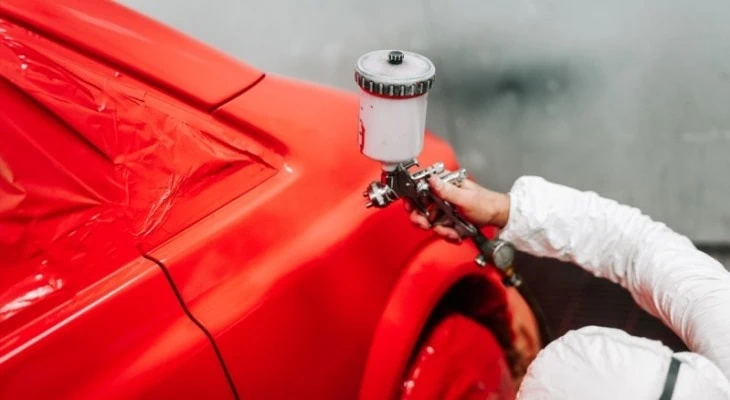Not long ago, I hit an armadillo in my Jeep while driving the backroads to my house after work. Thankfully, the damage wasn’t too bad – a replacement tire and a new fender and front bumper.
Since I was able to replace the fender and bumper by myself, my next step was to color-match the new parts to the rest of my vehicle. Before I did, I called a buddy of mine who works in an auto body shop to get recommendations on paint types, tools, and the overall process.
He gave me quite a bit of useful information, but he was particularly focused on the dry times of the paint and the clear coat. He mentioned that even if you apply fresh paint to a car just right, not giving it time to cure and dry would mean all my hard work would be in vain.
He was able to break down the different factors that influence dry time and gave me some pointers so that my project went according to plan.
Table of Contents
Factors Affecting Dry Times

Most auto body and paint shops have specific conditions that they paint in to minimize dry times and maximize efficiency. That way, they can get your car back to you as fast as possible.
Temperature
The ideal temperature to paint a car in is between 60 F-70F (15.5C-21C). There is a bit of wiggle room depending on the type of paint. If it’s too cold, the paint will dry slower, and if it’s too hot, it dries too fast. Paint drying too fast can lead to cracking.
Humidity
The rule of thumb is that general humidity should be around 50%. Too much or too little moisture in the air will affect the dry time and the look of the paint.
Ventilation
The room needs to be well-ventilated with a constant circulation of fresh air to allow fumes to escape and speed up the drying process.
Paint Type
This is a bit more nuanced, and I’ll explain in further detail below, but different types of car paint will require different drying times. There are some that dry within 18-24 hours, and there are others that require around 3 days to fully set.
Thickness/Area
Multiple coats of paint will make the process take longer than some quick touch-ups. Also, paint on the top of the car tends to dry quicker than paint on the sides and the bottom flares.
Dry Time Vs. Cure Time

There is an important distinction that needs to be made between dry time and cure time. Dry time is how long it takes for paint to be dry to the touch (on the surface level). Cure time is how long until every layer/coat is fully hardened and set.
How Long Does It Take For A Clear Coat To Dry?
The general process is applying paint, allowing it to dry, applying a clear coat, and then allowing the clear coat to cure. After the clear coat has cured, the car is safe to drive.
Most clear coats have anywhere between 24-72 hours of cure time, depending on the conditions listed above. A good safety zone allows 48 hours for a clear coat to cure.
Paint Types and Dry Times

As I mentioned earlier, the type of paint you use will determine how long to let car paint dry before driving. All the times listed below are the recommended wait times before applying a clear coat.
Remember, allow at least 48 hours for a clear coat to cure before driving your car.
Spray Paint – 6 Hours
The pros of spray paint for cars are that it is the most cost-effective option and the quickest drying option. Some brands have a dry time of as little as 6 hours. The biggest downfall of this type of paint, though, is that it is not nearly as durable as other types of paint.
Urethane – 8-10 Hours
With a slightly longer dry time than spray paint, urethane car paint is a top choice among professionals and is most often the type of paint that is used in body shops.
It needs to be applied while wearing a respirator and with specialty spray paint tools. It’s unlikely you will be doing this on your own in your garage. On the plus side, it is highly durable, with most brands having a 10-year lifespan!
Acrylic Enamel – 6- 48 Hours
6 – 48 hours seems like a large window, but that’s because there are two types of acrylic enamel. Type I and Type II.
Type I, a.k.a single-stage enamel, is paint and hardener mixed and has a shorter dry time of at least 6 hours. This type of enamel does not require a clear coat on top after it has been applied.
Type II a.k.a. Double-stage enamel, is applied in two parts: first, the paint, then the drying catalyst/top coat after the paint has dried. They must be used together, or else the paint will not dry. Type II can take up to 48 hours to dry.
Acrylic Lacquer – 6 Hours
Similar to spray paint but with a glossy finish, acrylic lacquer has a fairly quick dry time. Some car owners opt not to use a clear coat after applying lacquer because of how shiny it drives.
But it’s recommended you add at least one clear coat on top because acrylic lacquer alone is not known to be very resilient.
Useful Tips
When I repainted the two pieces on my Jeep, I used an acrylic lacquer and a quick-drying clear coat. I waited 6 hours for the lacquer to dry and sprayed on two coats of clear coat with 1 hour of dry time in between.
At the suggestion of my auto shop buddy, I tested the dry time by pressing my thumbnail into a small inconspicuous area to make sure there was no indentation left before I drove my car.
It’s also recommended you wait at least a week before sanding/buffing, and at least 30 days before washing your car.

